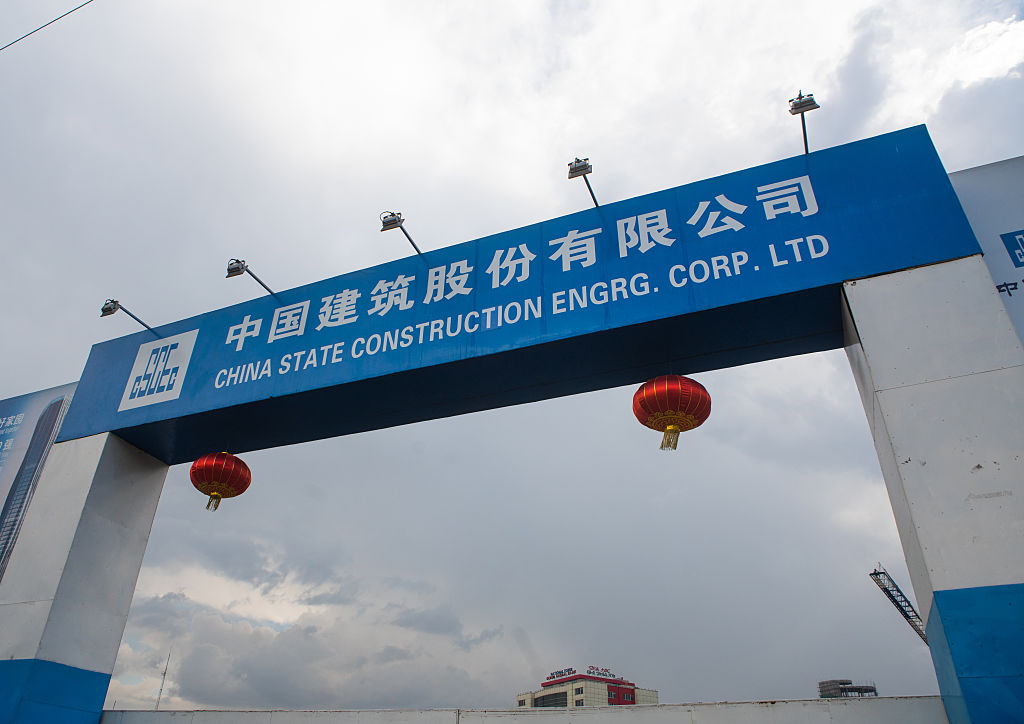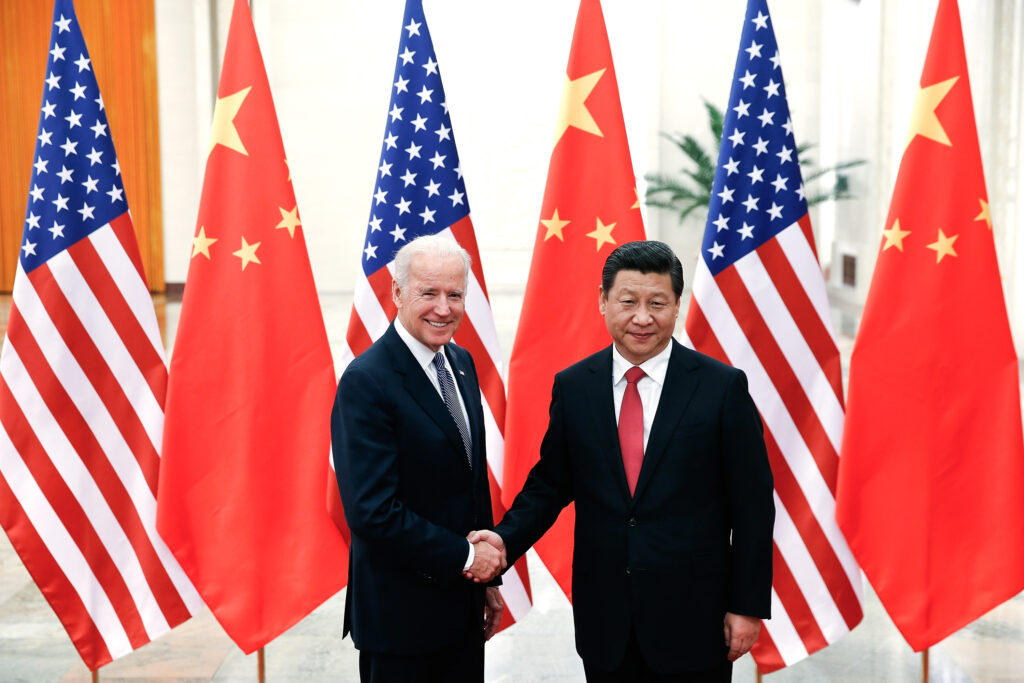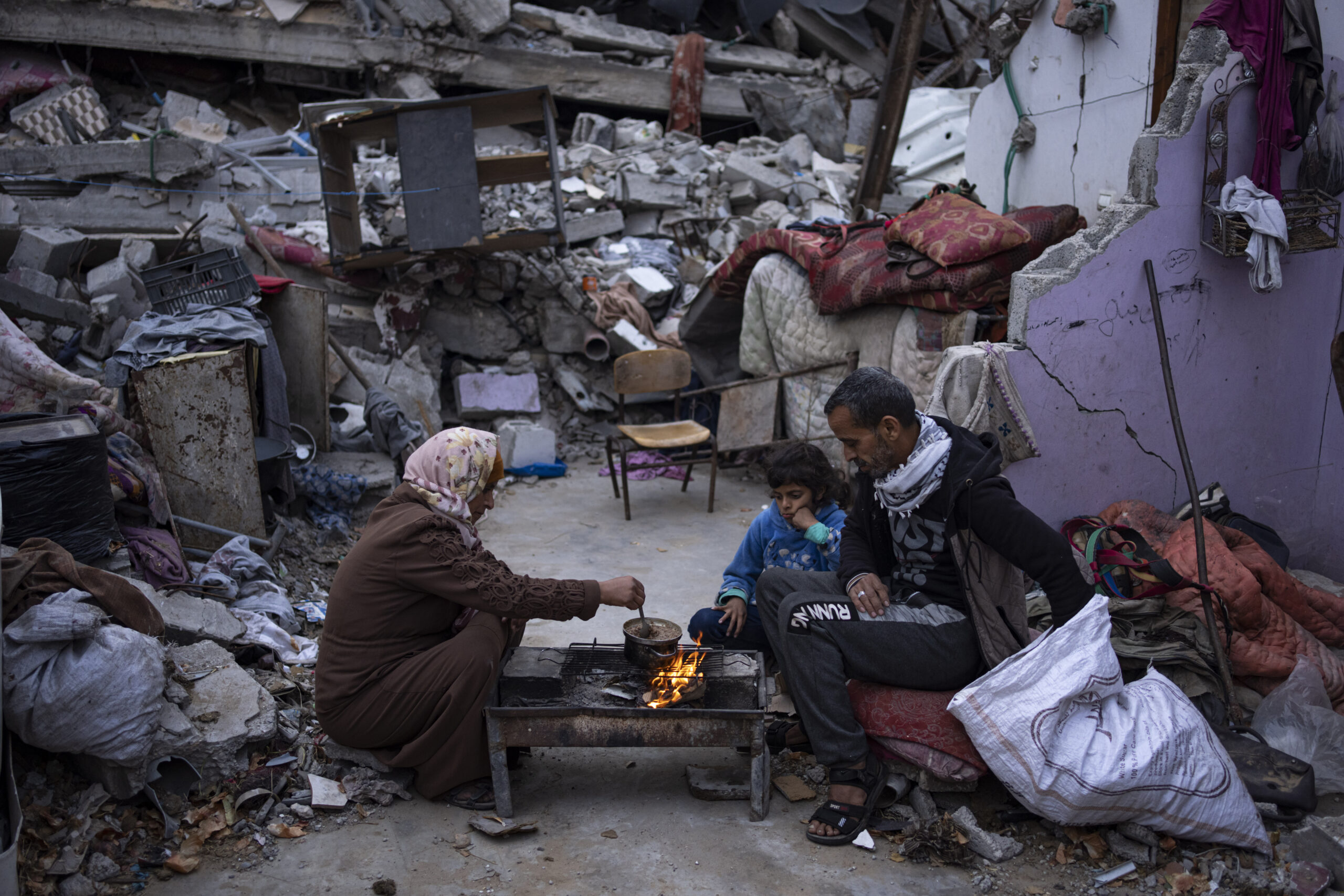Infrastructure investment has long been a vehicle for nation building, international diplomacy and a focus of development aid. This is not without warrant, infrastructure needs in the developing world are estimated to total a cumulative $40 trillion by 2035. China’s Belt and Road Initiative (BRI), established in 2013, has channeled massive amounts of Chinese capital into global infrastructure and pursued broader aims of improving policy coordination, trade, and connectivity between China and other countries. It has been both welcomed and feared for its potential to transform China into the world’s leading hegemonic power, and to expand global flows of people, capital, and goods.
On June 12, 2021, US President Biden along with the leaders of the Group of Seven (G7) launched Build Back Better for the World (B3W): their own, multilateral infrastructure investment initiative. The B3W is not yet laid out in detail, but its proponents portray it in direct contrast with the BRI and the Biden administration describes it as a “positive alternative” to the BRI’s “lack of transparency, poor environmental and labor standards, and a course of approach that’s left many countries worse off.” Framing the two initiatives as competing alternatives is deceptive. On one hand, they are not comparable in many important ways: they leverage funding differently and the countries behind each initiative have expertise and comparative advantage in very different types of infrastructure. On the other, they each face the same challenges that all infrastructure initiatives face, regardless of the implementing country(ies).
The focus on US-China competition also distracts from the important role of host countries in directing how infrastructure investments unfold on the ground. Some of the most prominent examples of the BRI’s negative impacts were driven as much by elite interests within the host country as by Chinese investor decision-making (e.g. the Hambantota Port in Sri Lanka, the pan-Asian railway through Laos, and multiple water infrastructure projects in the Philippines). Moreover, the focus on the geopolitics surrounding the two initiatives misrepresents their stakes. This goes beyond investor and host country national agendas for local communities and environments that are to be affected by these projects, workers that will build them, and the people they will connect.
The Belt and Road Initiative
In 2013, shortly after becoming President of China, Xi Jinping announced the BRI with massive fanfare but few concrete details or formal commitments. The BRI is best understood as a campaign-style galvanization of multilevel action under a broad banner (a common governing approach in China): not a grand strategy or formal policy, but a rebranding of Chinese global engagements. And while the BRI has certainly extended China’s political capital, the distribution of costs and benefits have not fallen definitively in China’s favor.
Eight years on, the initiative remains vaguely defined: there are no stated parameters for what activities and projects can claim a role in the initiative and signatory countries have joined across the world through ambitious but non-binding agreements. While difficult to measure in exact terms, since 2013 China has invested hundreds of billions of dollars on infrastructure projects in the developing world, making the BRI the biggest existing effort by a single country to reshape global connectivity today. Its stated aims go beyond funding infrastructure to include deepening trade, investment, policy coordination, and cultural ties between China and the rest of the world. More broadly, the BRI has become synonymous with Xi Jinping’s efforts to steer China into a leadership role in global development cooperation, aid, and trade.
The BRI builds upon China’s former Going Out policy (1999), which eased restrictions on overseas investment and encouraged firms to expand abroad. That initial policy resulted in a significant rise in Chinese firms’ transnational economic engagement. But strong economic push and pull factors also drove the BRI’s establishment. The 2008 Global Financial Crisis and ensuing recession saw most of the world’s top economic powers enter a long period of austerity. Traditional donors curbed their contributions to international institutions, development aid, and diplomacy efforts in order to cope. As for China, in order to weather the crisis, the state launched a massive domestic stimulus channeled largely through liberalization of credit for infrastructure investments. This further drove the accumulation of massive overcapacity in infrastructure to the point that the country’s domestic infrastructure development has reached an oversaturation point, and Chinese firms in infrastructure-related sectors (iron, steel, concrete, construction) need foreign outlets for their overcapacity at home.[1] The BRI thus emerged at the intersection between mounting domestic overcapitalization in China’s financial sector, overcapacity in its infrastructure sector, and a growing gap between the demand for and the shrinking supply of global infrastructure funding from traditional sources.
As a result, a period of rapid expansion in the activities and projects attributed to the BRI ensued. Many infrastructure investments established before 2013 were rebranded by their implementers as BRI projects, a wave of new projects were established, and a widening set of transnational activities started claiming the Belt and Road label. The geography of the BRI has grown from 68 countries along two corridors — one connecting China through Central Asia to Europe by land, one connecting China to the Indo-Pacific and to Africa by sea — to include more than 30 unique corridors in over 130 countries. It has expanded beyond traditional forms of infrastructure to include digital technology (Digital Silk Road), Arctic exploration (Arctic Silk Road), BRI tax cooperation, arbitration dispute resolutions, developments in outer space (Belt and Road Space Information Corridor) and even cultural events like chess tournaments. BRI events now serve an increasingly broad foreign engagement program across sectors, from economic development and trade to education, healthcare and the arts. The initiative has thus become the centerpiece of Chinese engagement with the world.
With this massive expansion has come a number of challenges and critiques. These include concerns over China’s debt relations with BRI host countries, the environmental sustainability and social responsibility of projects, and the risks and costs of failed and non-performing projects both to host countries and to China. Some of its most prominent critiques have been roundly disproven, such as portrayals of the BRI as a form of ‘debt-trap diplomacy.’[2] Others have prompted attempts to improve governance of the BRI. To address concerns of the environmental impacts of BRI projects, Xi Jinping declared a new focus on ‘greening’ the BRI in 2017 and committed to halting overseas coal financing at the September 2021 annual UN general assembly meeting. The prevalence of ‘white elephant’ projects – investments which have failed to pan out for a variety of reasons – have prompted efforts by the Chinese state to improve the quality and reduce the risk associated with BRI projects. Chinese policy banks are moving away from funding engineer-procure-construct projects (EPCs, in which they lend host countries up to 85% of a project’s value, but funds are paid directly to the Chinese contractor) to funding more on a commercial basis with Chinese firms taking equity stakes in the project. A Debt Sustainability Framework was also established in 2019 to address risks to both host countries and Chinese lenders.

Still, the decentralized nature of the initiative and the influence host country interests play in shaping projects make it difficult for Beijing to consistently govern the impacts of the BRI. While promoted heavily by Xi Jinping and China’s central government institutions, the BRI is implemented through a web of both state and private sector actors who operate with varying and continuously negotiated degrees of autonomy. The nature and degree of state involvement also varies significantly across country contexts and specific sectors, with strategic resource sectors exhibiting higher state-owned enterprise (SOE) investment and greater state involvement. Funding also comes from a diversity of sources: grants, conditional loans from the Export-Import Bank of China, the issuance of shares and corporate bonds by publicly traded Chinese firms, multilateral development institutions’ funds, and commercial lending from complex pools of China’s policy banks, state-owned commercial banks, and syndicates of Chinese and major international and host country financial institutions. Project selection, design, and implementation unfolds through negotiations between host country leaders and Chinese firms, with the Chinese state usually playing a minimal role in all but a select set of politically strategic deals. In sum, the BRI is not a singular exercise of power by China but a multifaceted expansion of encounters between varied forms of Chinese capital and the rest of the world.
Build Back Better World
The announcement of B3W this year came in similarly vague terms as the BRI’s debut 8 years prior. In a statement following the announcement, the G7 countries pledged their commitment to crafting it as a “values-driven, high-standard, and transparent infrastructure partnership.” Beyond the G7 countries, a White House Fact Sheet refers to “rallying the world’s democracies” and working with “other like-minded partners” to implement the initiative. Further specifics on the types of projects that will be launched and the mechanisms for funding and implementing those projects have yet to be announced, but the initiative has been widely promoted as a direct response to China’s BRI. And while the B3W is described as a global initiative, its promotion has begun in Latin America: in late September, US officials arrived in Latin America for their first of many “listening tours” where officials will speak with private sector, civil society and traditionally marginalized groups about potentially beneficial programs the B3W could support.
The B3W follows other recent multilateral attempts to counter the BRI, including the Asia-Africa Growth Corridor (between India, Japan, and multiple African countries) and the Trilateral Partnership for Infrastructure Investment (between the US, Japan, and Australia). The Trump Administration’s Blue-Dot Network, which set out to assess and establish a certification scheme for global infrastructure development projects based on their financial transparency, environmental sustainability, and economic development impact, constitutes the basis for the B3W’s claim to promoting high-quality projects. B3W also emerges as G7 countries, especially the US, struggle to address a number of domestic and foreign political concerns. The US infrastructure system is itself in dire need of investment and “Build Back Better World” borrows its name directly from the Biden Administration’s “Build Back Better” domestic agenda. Other G7 countries have a similar infrastructure deficit, and none have the infrastructure capacity excess to rival China’s, which will make justifying spending on foreign countries’ infrastructure needs to domestic constituents challenging. Meanwhile, in the US, competing with China has become a rare bipartisan rallying cry, and countering the BRI and other Chinese initiatives serves as a useful tool for garnering domestic popular approval for a range of overseas initiatives. On the international front, similarly, the Biden administration has committed to showing allies that “America is Back,” and leading the world’s democracies in countering China’s expanding influence seems the central pillar in that claim.
Four priority areas have been laid out for the B3W: climate, health, digital technology, and gender. These represent high demand areas in which the G7 countries excel, and by working in concert they may offer a greater diversity in terms of the types of investments they can competitively and effectively drive. For example, the US has much to offer in terms of health care, and in its development programs are able to lend to host country small-and-medium sized enterprises and Japan is a top developer of high-speed rail and still tops China in hard infrastructure spending in Southeast Asia. Moreover all G7 countries have a flawed but longer history than China of community consultations, civil society engagement and implementation of environmental and social impact assessments. But in terms of physical infrastructure, which constitutes the bulk of demand for infrastructure funding globally, China has a clear advantage as discussed above. Chinese firms have become the dominant players in hydropower, high-voltage transmission lines, high-speed rail, road and bridge construction and most other types of large-scale physical infrastructure.
Perhaps the most widely questioned aspect of the B3W has been that of its funding. To date, no binding commitments of funding have been made by G7 countries to the B3W. US President Biden’s speech following the G7 summit mentions working with Congress to augment the effort and drawing upon private capital and existing institutional investors (e.g. insurance companies and pension funds) for implementation. If domestic efforts are any indication, building support around funding the B3W in the US Congress will be difficult. The plan is also to use multilateral development institutions to assist in attracting greater private funding, but this has been standard operating procedure at institutions like the World Bank for years and private investors have still avoided the risks and challenges of infrastructure investments in low-income and emerging market contexts, where demand for BRI funding has been the greatest. It can thus be expected that the initiative will largely utilize existing G7 development finance institutions, meaning that the scope of what projects can be funded is dramatically smaller in comparison to typical BRI projects.
Better through Competition?
Proponents of the B3W suggest that its focus on “high-quality” projects will drive better performance along the BRI, essentially encouraging improvement through competition. Framing the two initiatives as competing alternatives distracts from the ways in which they contrast, most notably in terms of their financing and the types of “infrastructure” they pursue. It also ignores the ways competition can just as easily drive a race to the bottom. Finally, both the BRI and the B3W will face a number of common challenges posed by infrastructure development, regardless of what country is funding or implementing projects.
One way the B3W might portray itself as “higher-quality” would be to simply eschew the ‘dirty’ investments China has a competitive advantage in such as coal, mining and large physical infrastructure projects that drive destructive landscape transformations regardless of how responsibly planned they are. Projects in the B3W’s stated focus areas (climate, health, digital technology, and gender) inherently involve fewer negative impacts. But focusing on a separate type of infrastructure from the BRI’s altogether seems more like operating in parallel than in competition with China, and would not represent a net gain in the quality of global infrastructure developments. Funding similar types of (hard) infrastructure projects as the BRI with improved environmental and social performance, on the other hand, would constitute a more substantive approach to improving project ‘quality.’ But the US track record thus far is disappointing in this respect and BRI projects’ environmental and social impacts are not as questionable as the B3W’s proponents suggest.
B3W-supported projects already include socially and environmentally risky projects. The US DFC has provided $1.5 billion in political risk insurance for a large-scale Exxon-led liquefied natural gas (LNG) project and a $200 million loan for an additional gas fired-power plant in Mozambique. The US DFC approved this LNG project even after knowledge of internal assessments of its negative social and environmental impacts, including forced evictions and resultant armed conflicts. These concerns were brushed aside by the specter of Chinese competition over the project. Meanwhile, Chinese firms have won the largest share of World Bank and African Development Bank contracts since 2000. Systematic analysis of these projects has found no evidence of differences between Chinese construction firms and their OECD counterparts in Africa in terms of project quality (Hong Zhang, p. 8-9, Farrell, 2016).
More importantly, research has shown that BRI projects can adhere to good environmental standards where host country domestic policies prioritize sustainability. This is not to say that Chinese investors bear no responsibility for improving environmental standards. Indeed, many are finding, as their counterparts from other countries have discovered, that being more environmentally and socially responsible benefits the bottom line. Essentially, host country politics play a significant role that BRI/B3W competition will not address. Evidence can be derived from competition within the BRI itself. For railway projects in Indonesia and Malaysia, geoeconomic competition between Japanese and Chinese developers created incentives for host country elites to lower standards and borrow more. The Ethiopian government, in contrast, has leveraged competition between a Chinese state firm and its private counterpart in the telecommunications sector to increase technology transfer and the hiring of local labor. Competition itself is not inherently good, but when leveraged properly it can create higher standards.

Meanwhile, China is making its own moves towards improved environmental standards. At the UN General Assembly meeting this September, Xi Jinping declared an end to China building overseas coal projects. The announcement represents a watershed moment in the fight against climate change, though the likely drivers of this decision are complex and it only begins to curb global coal financing. The decision to establish Chinese coal projects in the first place has been shown to be driven by host country domestic policies, not by Chinese interests alone. Host countries by and large seek coal as a means of procuring cheap baseload energy to fuel national development. This is changing, though, as renewables become cheaper and growing local protests against coal development make it a riskier investment. Chinese banks were thus already moving away from financing coal and the next two primary funders, South Korea and Japan, announced plans to curb their own public overseas spending in the sector earlier this year. And while China is the top provider of public financing for coal infrastructure (to the tune of US$15.6 billion), non-Chinese private entities still finance the lion’s share of overseas coal plants. Therefore, China’s commitment will have an immense and undeniable impact, but it is pivotal that the momentum it has created be leveraged to further improve accountability systems for infrastructure developers (regardless of their country origin) and ensure that all coal financing, public and private, Chinese and otherwise, is channeled into responsible renewable alternatives.
Finally, a number of challenges will be shared by both the B3W and the BRI. Infrastructure projects hold great political appeal for host country elites: they provide opportunities for ribbon cutting, generate employment, draw in large flows of capital, and are central to visions of modernization and development. But implementing these projects poses a range of obstacles. Even in the most ideal fiscal conditions and under the most stringent governance standards, large-scale projects tend to exceed the costs, timelines, and impacts initially planned. Given how challenging it is to develop infrastructure, most projects regardless of the sector require the coordination of a complex web of actors, funding sources, and development activities. Even when a project’s primary investor is “American”, “German” or “Chinese,” the project’s implementation is typically shaped and carried out by actors and institutions across multiple countries.
The “quality” of any given infrastructure project is determined in part by its funding structure. Infrastructure financing institutions have become pivotal actors in the governance of labor standards, environmental impacts, social safeguards, and the development impacts of projects writ large. Currently, Chinese development funding is growing and diversifying but still largely flows into countries and sectors that differ from where G7 countries focus. Part of China’s appeal as an infrastructure lender is that traditional donors and multilateral banks have moved away from funding hard infrastructure. Where the World Bank once allocated 70% of its funding to infrastructure, it now only allocates 30%, and engaging these sources of infrastructure funding requires host countries to engage in far more time-consuming bureaucratic work than what Chinese lenders demand. Clear efforts are being made by traditional donors to reform. For example, the US International Development Finance Corporation (DFC) was established in 2018 with the dual aims of modernizing development finance and furthering US foreign policy – particularly the expansion of Chinese state-sponsored development finance. But China remains the go-to hard infrastructure lender globally, especially for transport and power projects and particularly for the poorest countries with limited alternatives. The B3W may succeed in shifting some funding back into physical infrastructure. But given Chinese firms’ advantages over G7 country firms in related sectors and the obstacles to raising enough funding to rival the BRI, this seems like a flawed approach.
Conclusions
The establishment of both the B3W and the BRI has shined a spotlight on the issue of infrastructure financing which should prompt deeper reflection on all sides. Infrastructure improvements have wide reaching and long lasting benefits, but they incur massive costs upfront, have extensive direct and indirect environmental impacts, and create both winners and losers as access to markets and mobility are transformed. The intersecting crises of climate change, civil unrest around growing inequality and globalization, and the Covid-19 pandemic have placed boundaries on the space for global power competition and made international cooperation and engaging stakeholders at multiple levels more urgent.
Coverage of the B3W has thus far been largely framed by its implications for the world’s most powerful countries, namely by the growing competition between the US and China. We propose that the effects of both initiatives on their stated stakeholders – developing countries who need infrastructural investment to grow and the communities expected to benefit from increased connectivity and access to infrastructure – should be of more central concern. Host country interests, but more importantly the needs of common people beyond the level of the nation-state should be at the center of this discussion. And because host country elites have considerable agency in selecting which infrastructure projects move forward and how they are financed, improved governance by both G7 countries and China should include the involvement of civil society institutions alongside political and economic leaders.
When dynamic, relational engagements like trade and investment are treated as fields for competition, nationalistic sentiment often clouds the costs and the lines dividing winners and losers. Competition between the BRI and B3W infrastructure investment initiatives will be waged through the corporations and financial institutions of the world’s most powerful nations, and those are the interests who will most directly benefit from that competition. Those who lose out, on the other hand, are likely to be the workers, adjacent communities, and landscapes who will be the first to be squeezed when the competition gets tough. If we take the G7 at their word that the B3W aims to close the infrastructure funding gap while improving the quality and social and environmental impacts of projects, then continuing to portray it in terms of competition with China will undermine its stated goals. Working by example and in parallel, instead of working against China is a more promising way forward.
This essay and the ideas contained within – along with any factual errors – are ours alone. Nevertheless, we want to acknowledge that we benefited greatly from conversations with Eli Friedman, Phil McMichael, and Cecilie Han Springer. Angela Pan and Isaac Herzog also helped by compiling a review of available literature and media
coverage and through initial framing discussions on the topic.
Juliet Lu and Erik Myxter-Iino are the hosts of the Belt and Road Podcast. Lu is a Atkinson Postdoctoral Research Fellow at Cornell University and Myxter-Iino is Senior Researcher at Inclusive Development International.
[1] Chinese firms are now the most globally competitive in most physical infrastructure related sectors. Seven of the world’s top ten largest construction firms are Chinese, and Chinese firms also dominate the large-scale hydropower and high-speed rail sectors.
[2] Rithmire and Brautigan argue against the ‘debt-trap’ narrative primarily by pointing out that Chinese banks readily restructure existing loan terms to accommodate host countries and have never seized assets as a result of (widespread) host country failures to meet repayment schedules.



